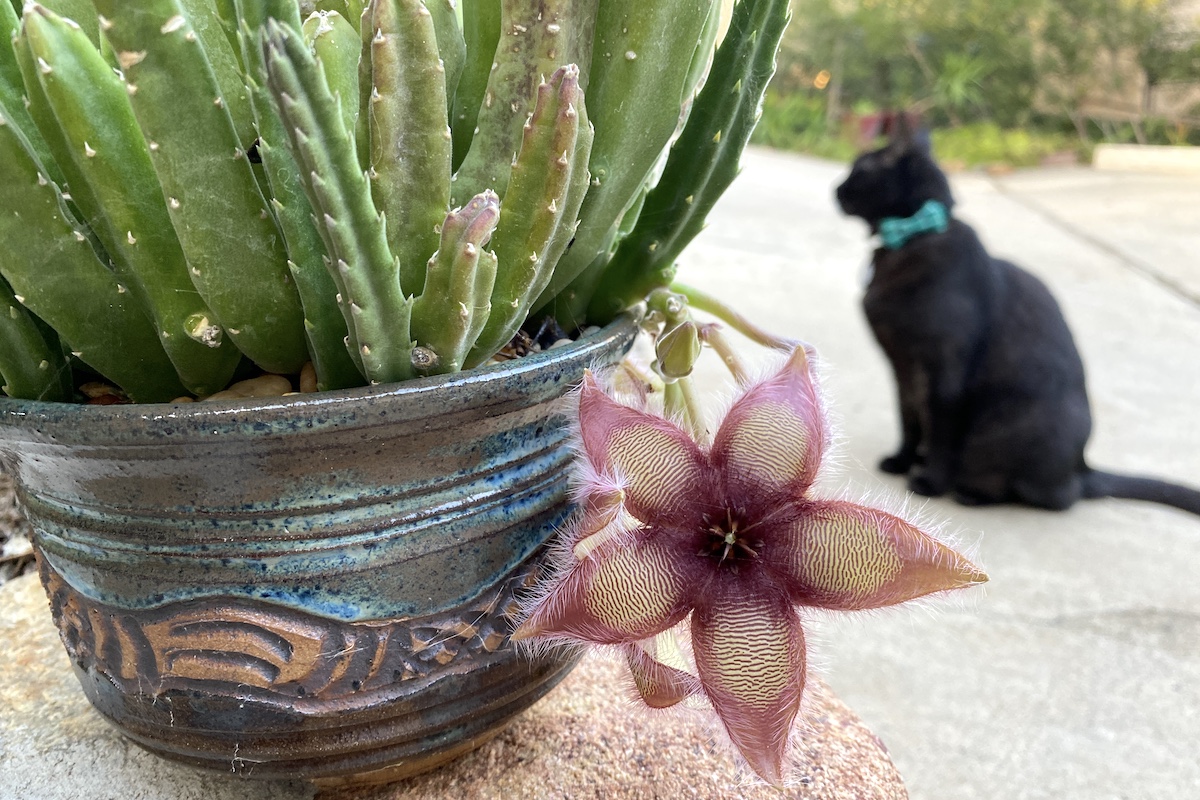
Success with Stapeliads (Carrion Flowers)
Stapeliads, succulents from South Africa and Arabia, produce some of the most unusual flowers of any in the plant kingdom. These star-shaped blooms use color, texture, and odor to resemble decomposing meat. Your dogs may find them fascinating (mine do). Fingerlike leaves of stapeliads are generally soft, upright and four-angled, with ridged edges. Points along stems are safe to touch.
"One of the dirty tricks we succulent geeks like to pull is to have someone take a big whiff of the unusual starfish flowers of a stapeliad," Jeff Moore of Solana Succulents nursery says in his book, Soft Succulents. "The plants have opted out of the bee pool and decided to use flies as pollinators, hence the smell of rotting flesh.”
Stapeliads, Jeff adds, “are mostly nice little spineless, often fuzzy collections of small columns, but the attraction is really the diverse array of alien-looking flowers. They even look cool as puffed-up pods a few days before they peel open.”

Stapelia gigantea in bud (scroll down to see the flower)
Below: Orbea lutea takes floral seduction a step further: Black threads on petals dance in the slightest breeze. CLICK to see Orbea lutea in action.
Stapeliad Care and Cultivation
Considering how fascinating they are, it's a wonder stapeliads aren't more widely cultivated. Jeff speculates that they're too equatorial for most collectors, and need to be greenhouse-grown. Here in Southern CA, a handful of species do well as potted plants, and several (notably Stapelia gigantea) survive in garden beds.

Map of region where stapeliads grow: Mainly bordering the Red Sea
- Water: As with most succulents, keep soil barely moist. Water once every week or so in summer; less in fall and winter depending on the weather; and minimally in winter. Protect from soaking rainstorms. Stapeliad collector Jen Greene advises in her article for the San Diego Cactus & Succulent Society newsletter: “Water when stems start to wrinkle and shrink or droop. It’s easier to rehydrate the plant than to save it from rot.”
- Flowers: Jen also applies half-strength fertilizer to encourage prolific blooms. She uses dilute fish emulsion, which she says smells worse than the flowers! The Henry Shaw C&SS advises, “for maximum floral display, repot frequently. Flowers appear only on newer stems, so older stems can be removed without losing flowering potential.”
- Propagation: Take cuttings in spring as the weather warms. They’ll produce roots when laid flat on succulent soil. Jen keeps soil damp so it doesn’t turn “into dust until the cutting has firmly rooted.” She wiggles it to check; a rooted cutting will feel like it has “grabbed-on.”
- Soil should drain exceptionally well. Use a 30-30-30 blend of cactus mix, coarse sand (like decomposed granite) and pumice.
- Pests and problems: Main enemies of stapeliads are mealy bugs and black rot. If you see any patches of the latter, remove them immediately. Drench the plant with fungicide and repot in fresh soil.
Stapeliads to get you started
Most stapeliads have a growth spurt in late fall and early winter, which also is when they bloom---and IMHO, the flowers are the main reason to grow them. Shown here are readily available varieties, some of which I grow in my own garden (Southern CA Zone 9B). These are, however, a mere fraction of the species that exist (and tend to be more finicky).
Many thanks for the use of their photos: collectors Pat Roach and Rich Zeh, Mountain Crest Gardens nursery, and newsletter subscriber Ray Burge.
Hoodia gordonii: Native to arid habitats in South Africa and Namibia, this succulent has long been used by indigenous peoples of South Africa to assuage hunger pangs on Kalahari hunting trips. Because of extreme interest in the genus as an appetite suppressant, trade is restricted.
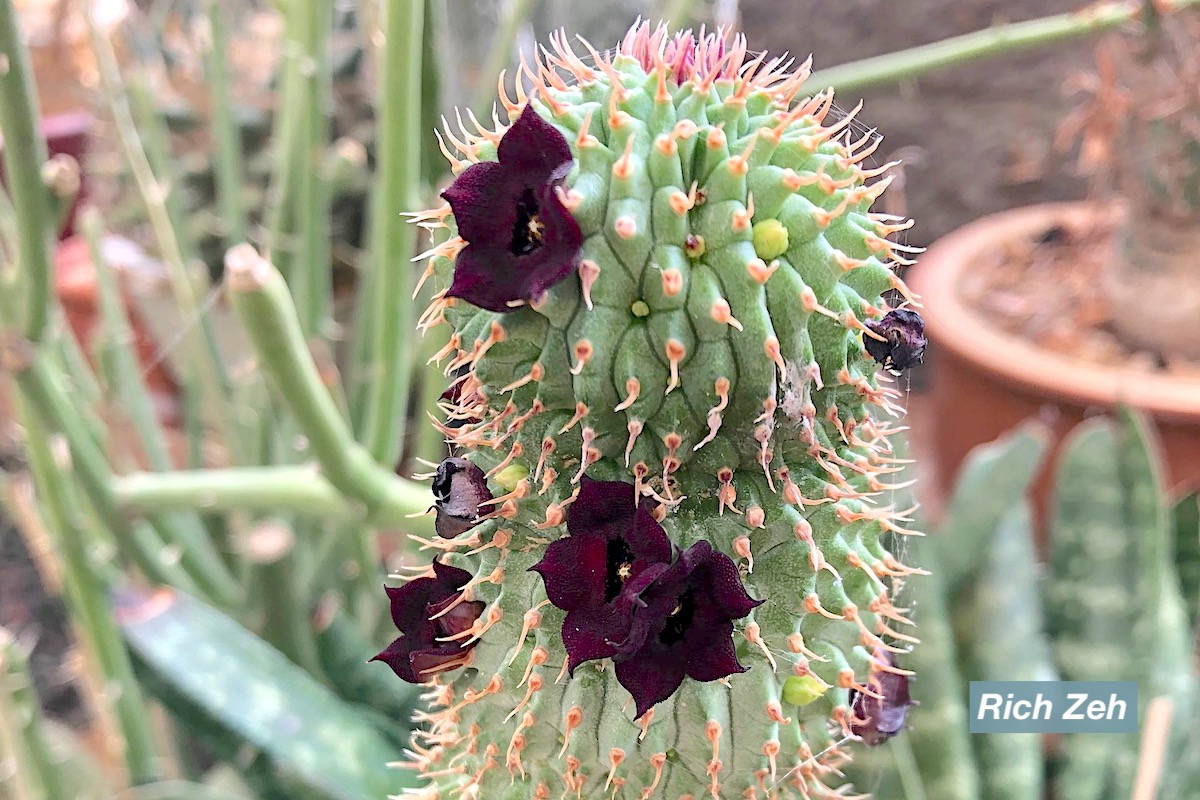
Hoodia parviflora
Hoodia parviflora: This largest species of Hoodia can grow to the size of a tree — as tall as 6 or 7 feet. Its small maroon flowers are known for their particularly obnoxious smell.
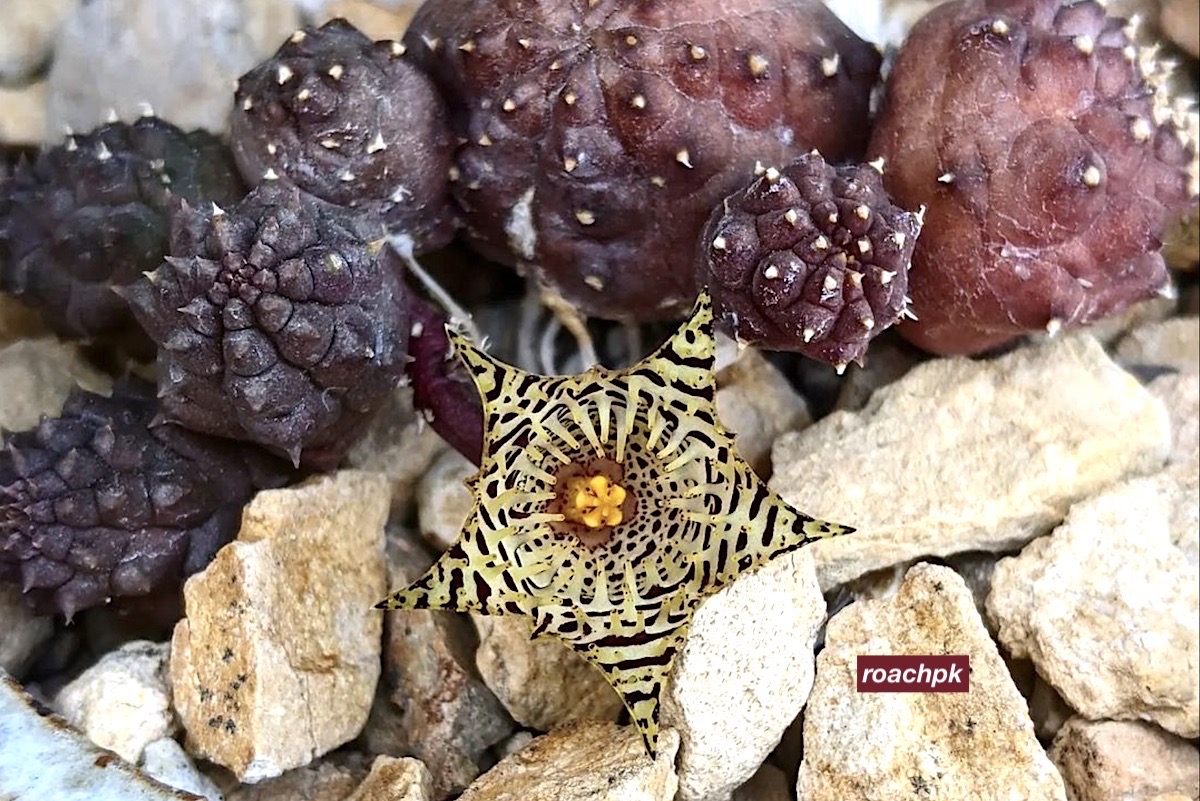
Huernia kennedyana
Huernia kennedyana: It's known as the "Humpty Dumpty" huernia for its egg-shaped (globose) stems. Dark red indicates summer stress; stems will revert to green in winter. Tiger-striped flowers are about an inch in diameter.
Huernia mccoyi: One of the easier stapeliads to grow, it also flowers profusely. Blooms, which form near its base, are five-pointed funnels. Atypical of stapeliads, this one is odorless.
Huernia procumbens: Produces large, sea-star-like, pale yellow flowers with a raised burgundy ring at their centers. "Procumbens" refers to the sprawling, trailing habit of the plant's many stems.

Huernia thuretii
Huernia thuretii ranges in color from apple green to deep burgundy. It produces pale yellow, multipointed flowers with a recessed center cup.
Huernia thuretii var. primulina: Green stems become tipped with pink and purple when grown in bright sunlight. Yellow flowers sprout from the base to form cupped stars.
Huernia zebrina has a prominent center ring that resembles a red candy Lifesaver. Surrounding the raised ring, pale yellow petals banded in red form five points---actually ten, if you count the mini-ones midway.
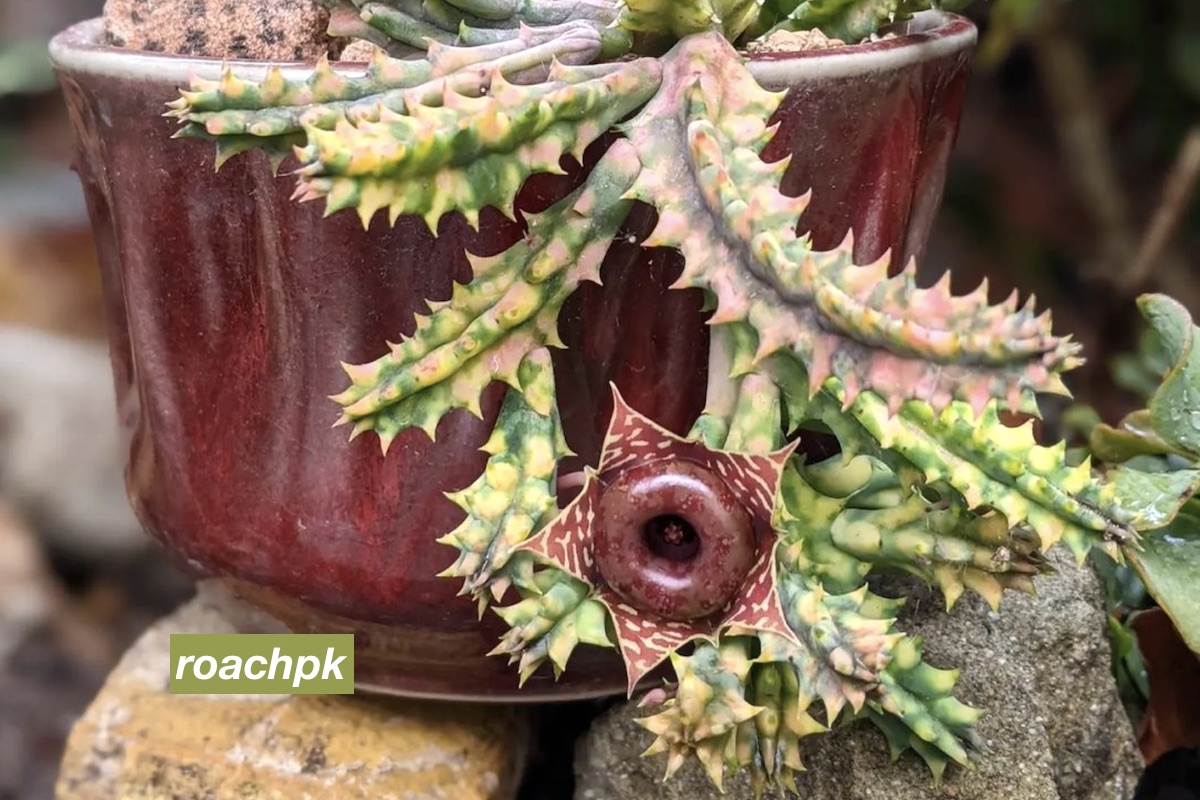
Huernia zebrina has a rare variegated form. This one, in the collection of Pat Roach, came from Rojas Succulents in Fallbrook, CA.

Piaranthus globosus
I've included this because it's a charming stapeliad that its owner (at the C&SS show where I shot it) thought might be an orbea. Flowers are about an inch across and leaves are stubby. UPDATE: Many thanks to Florin Gabar for the ID!
Orbea variegata: Forms a dense cluster of stems. Leathery-petalled flowers up to three inches wide are pale yellow and speckled with burgundy. Note the prominent five-pointed star at center---it's loaded with pollen. Like orchids, stapeliads coat insects with pollen which they transfer as they move on to the next flower.
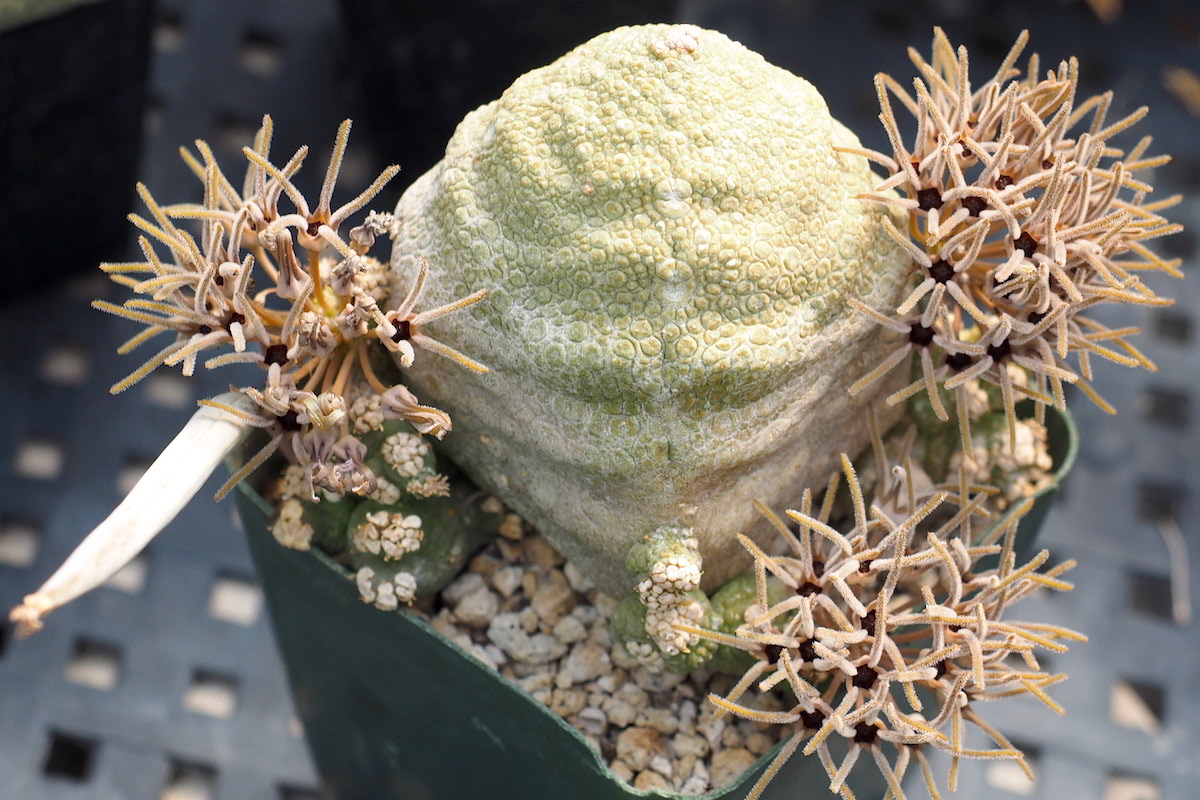
Pseudolithos cubiformis
Pseudolithos cubiformis: This is one of the craziest-looking plants. Its name means "false stone" and I see why, but it reminds me of Turkish delight candy. Or perhaps a petit-four. It's native to Somalia, and it was only while researching this article I discovered that Pseudolithos is a stapeliad. Those flowers! Btw, I shot this at Petra Crist's Rare Succulents nursery.

Stapelia gigantea
Stapelia gigantea, with flowers up to 10 inches across, has some of the largest blooms of any succulent. Leaves grow to about 8 inches tall, and are colony-forming. One of the few stapeliads that will grow in the ground in Southwest gardens.

Stapelia grandiflora in a San Diego garden
Stapelia grandiflora has meat-colored petals and fur, the better to persuade flies that it's a putrescent animal.
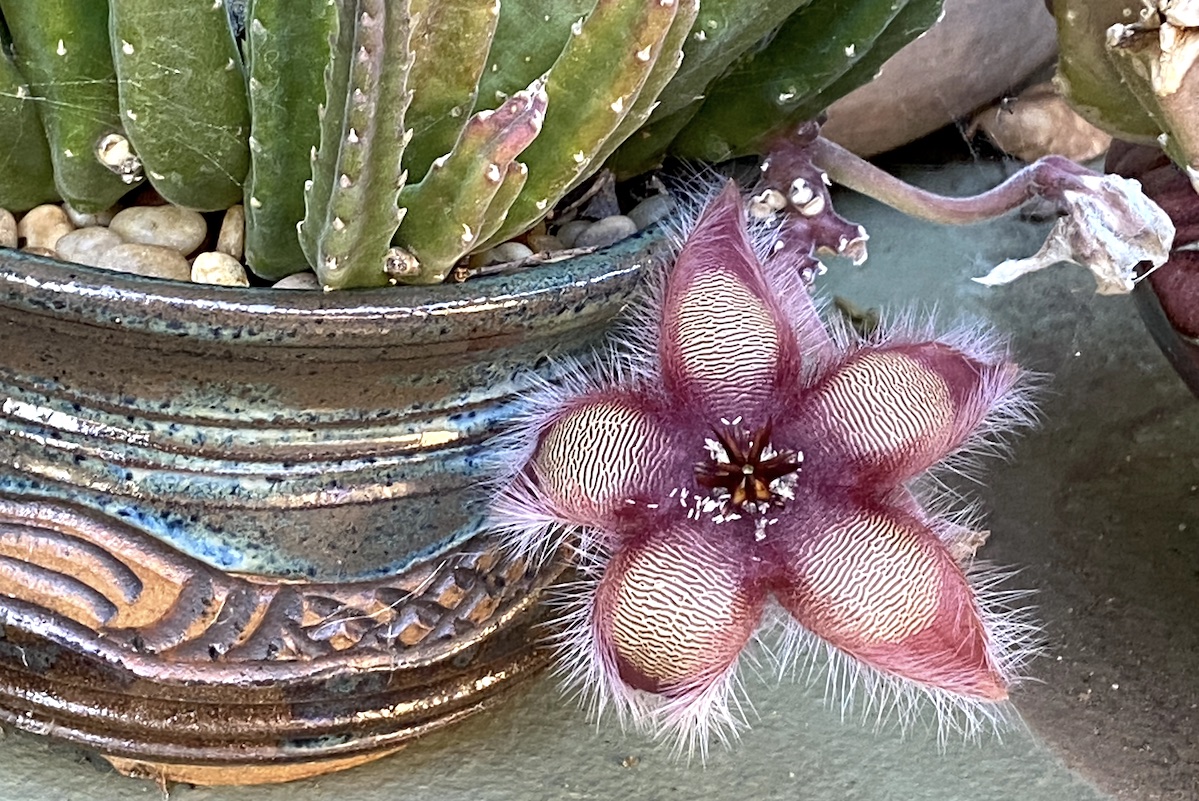
Stapelia grandiflora flower, after flies laid eggs (some of which have hatched) at its center.

Stapelia hirsuta
Stapelia hirsuta: I love when a species name is helpfully descriptive. "Hirsute" means "hairy." Only thing is, we've seen hairier stapeliads. However, this one does a superb job resembling carrion. It's native to the far west of South Africa, where it receives winter rainfall similar to Southern California's.
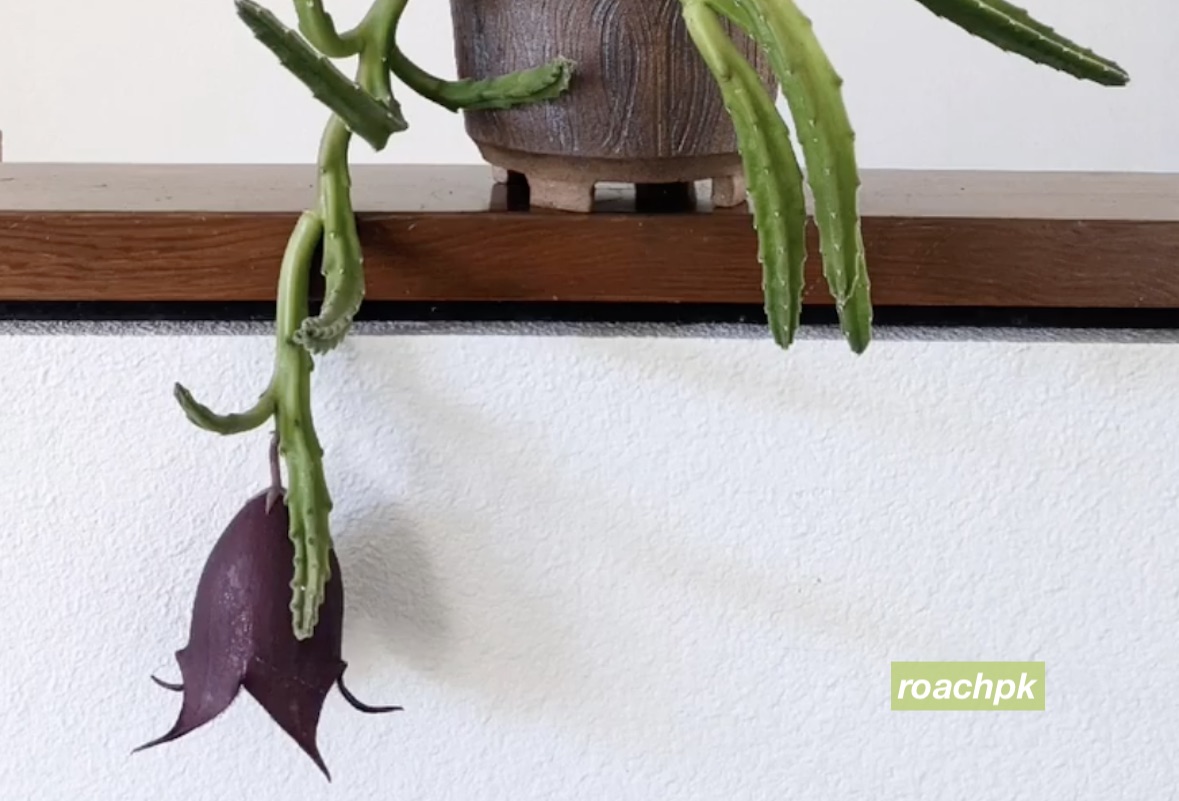
Stapelia leendertziae (black bells)
Stapelia leendertziae's dark maroon, bell-shaped blooms give the plant the common name "black bells." The flower is an impressive 4 inches in length.
Stapelia paniculata ssp. scitula, despite looking like furry beef jerky, doesn't smell like other stapeliad flowers---a good thing.
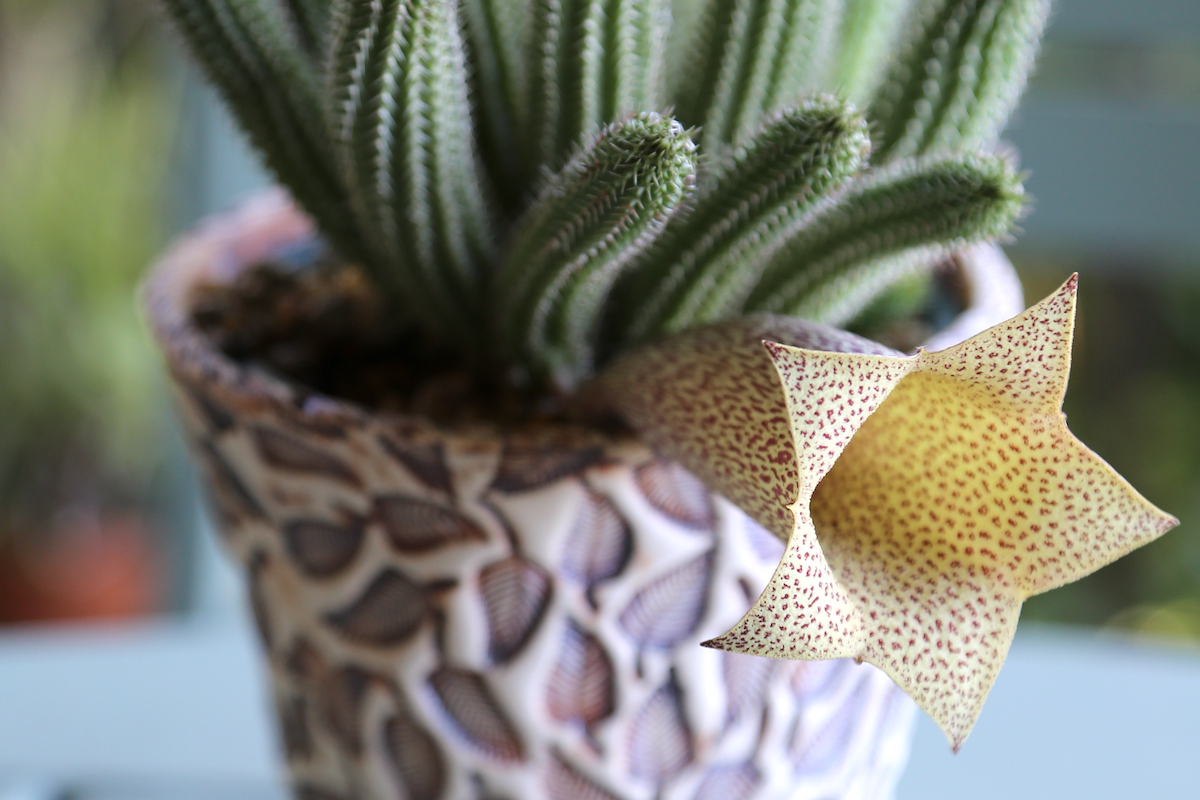
Tavaresia sp.
This little known genus is native to rocky slopes and outcrops in South Africa (Karoo scrub and grassland) where it grows out in the open and in light shade. Plants are sensitive to overwatering and susceptible to mold in humid climates. Mine (shown here) thrived for months and then didn't make it through the winter.
Did you enjoy this excursion into the world of stapeliads? Tell us in the comments below...and do share your own experiences with these weirdly wonderful succulents!
Related info on this site
Types of Succulents from Aeonium to Zebra Plant, Photos & IDs
Debra’s Dozen Easy-Grow Succulent Plants for Beginners
Trying to make sense out of succulents? There are numerous varieties, but these are the most common succulents and those you’ll likely run across. Enjoy growing and discovering these fascinating “plants that drink responsibly!”
See Rich Zeh’s 30-Year Succulent & Cactus Collection
Rich Zeh has an Aladdin’s trove of cacti and succulents. “I’m pretty much maxed out on space,” he says of his one-acre garden and greenhouse in Paradise Valley (Phoenix) Arizona.


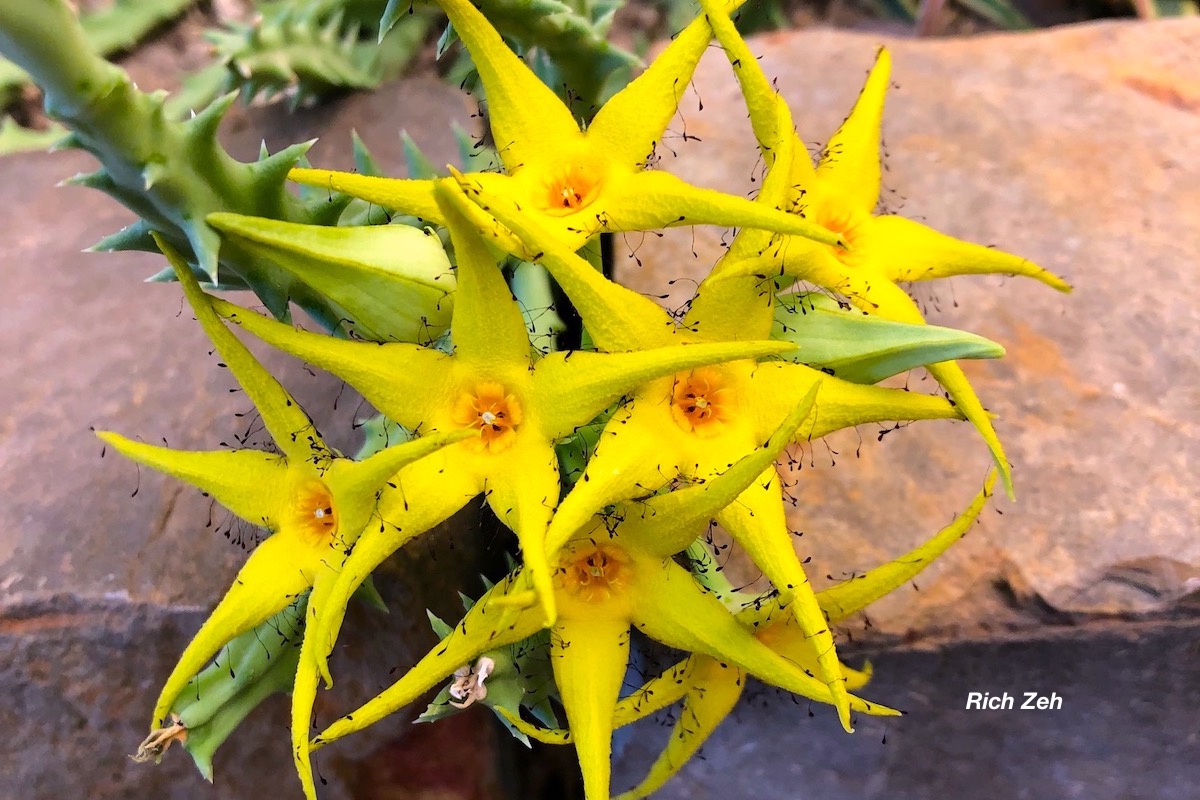

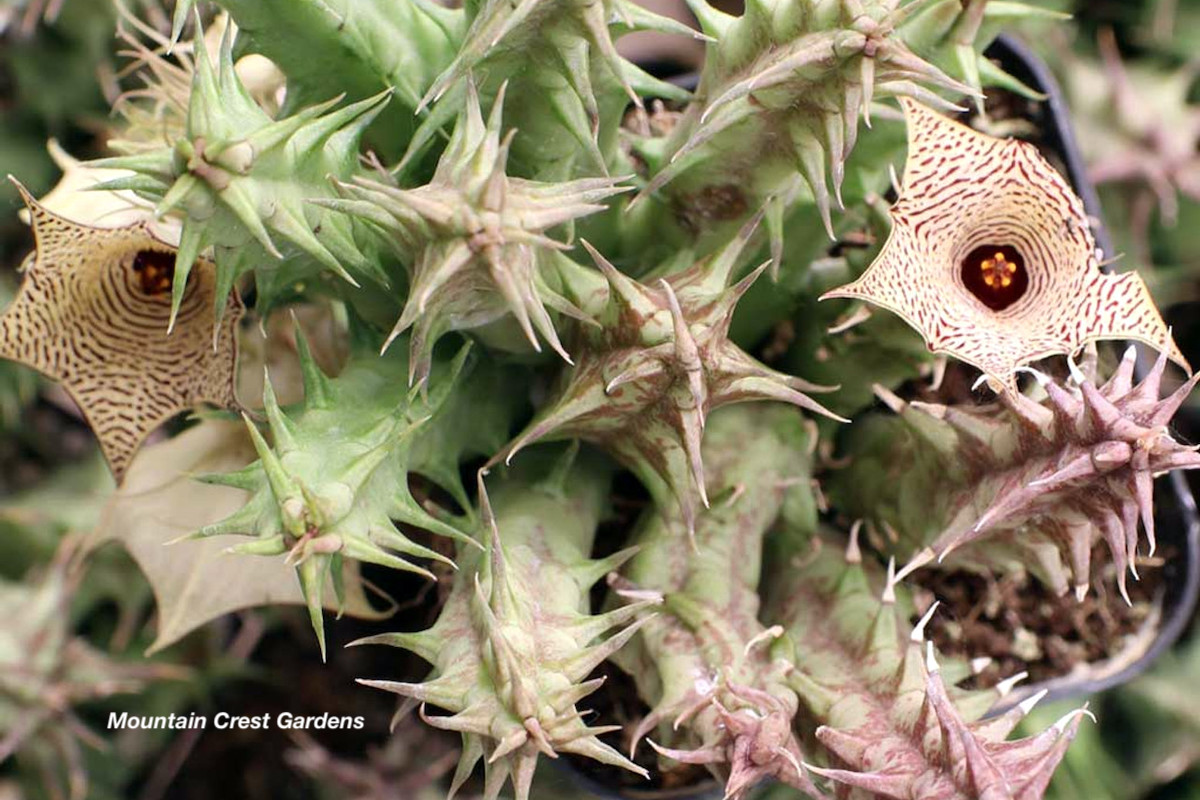
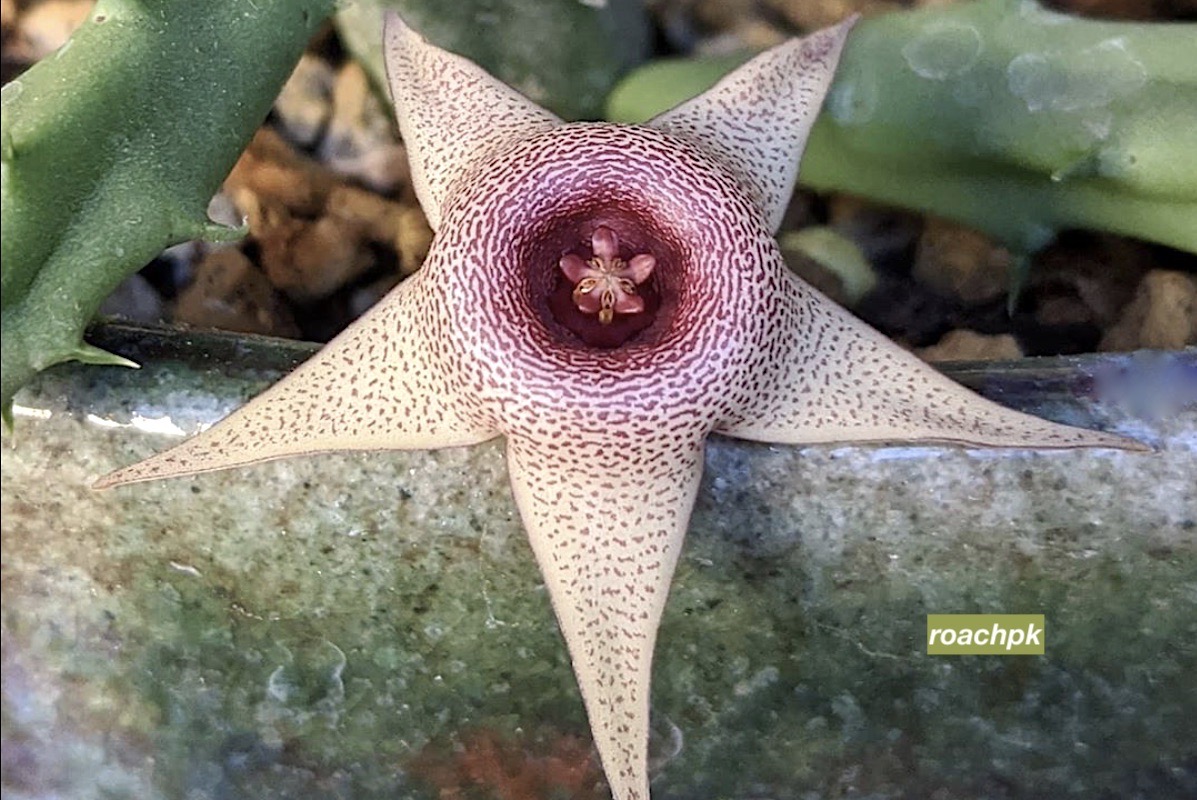
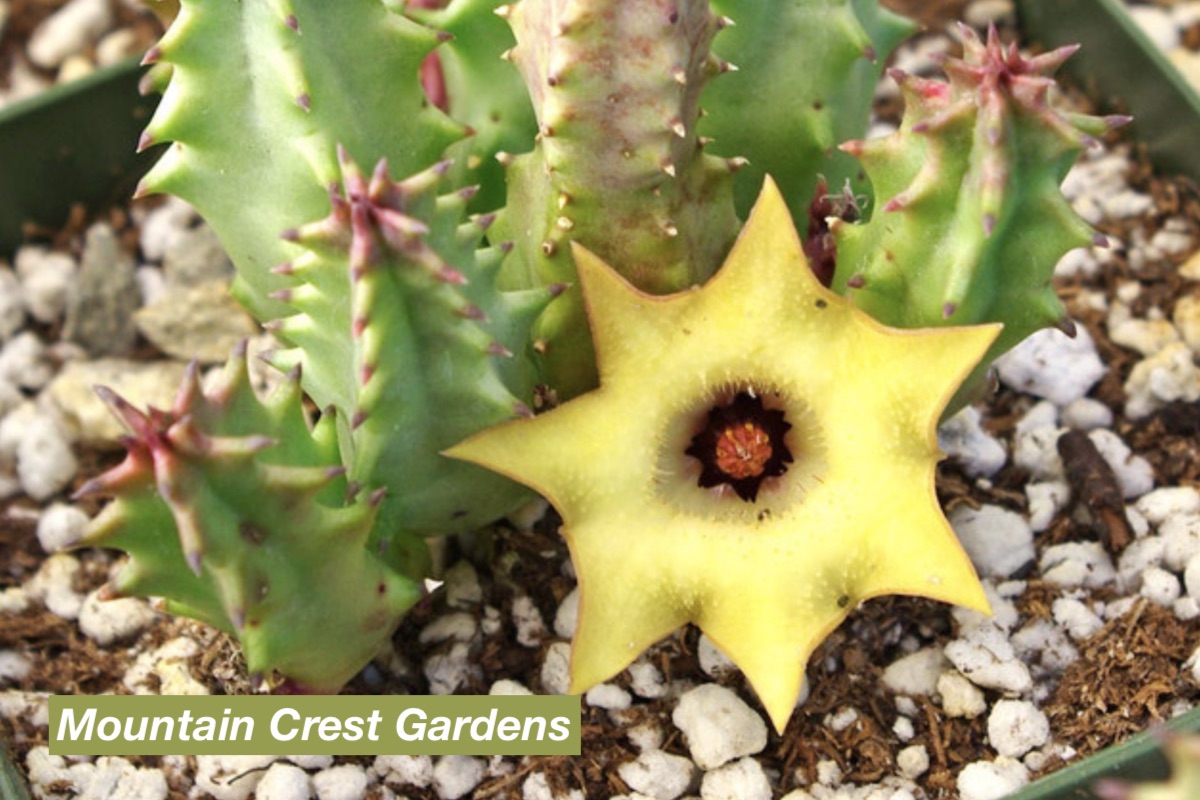
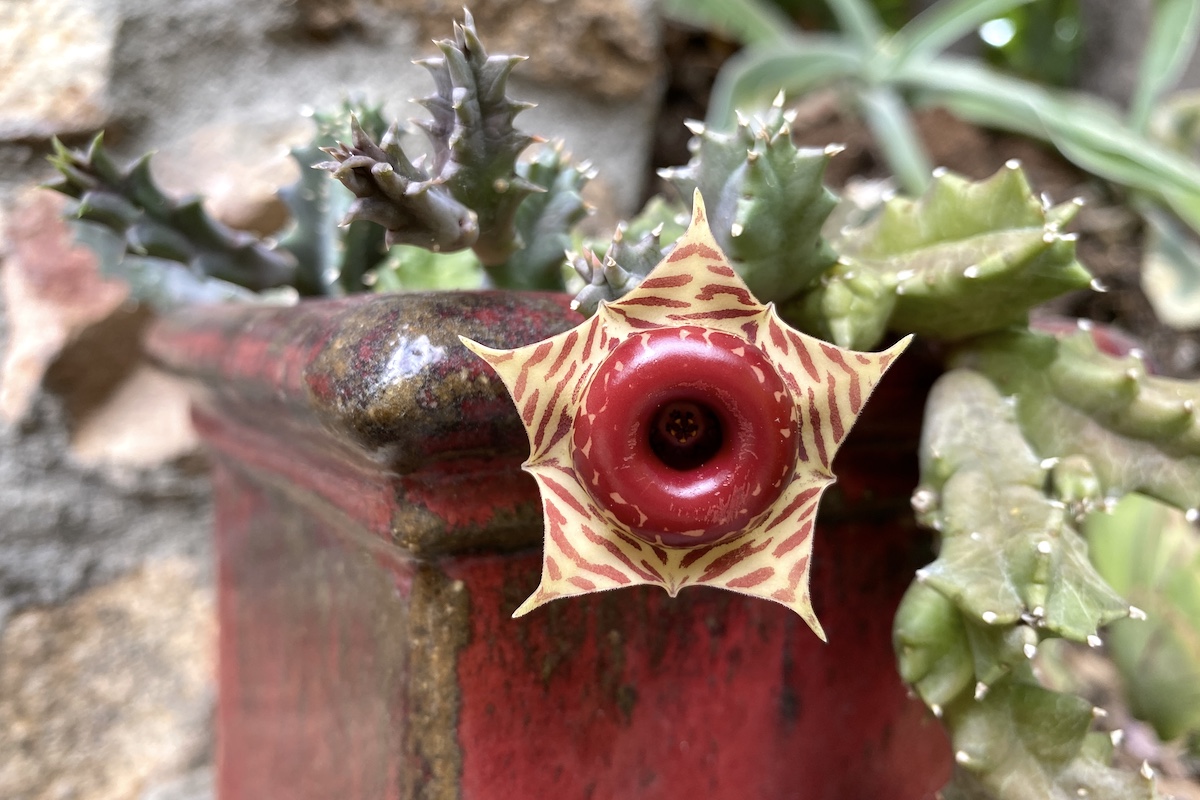

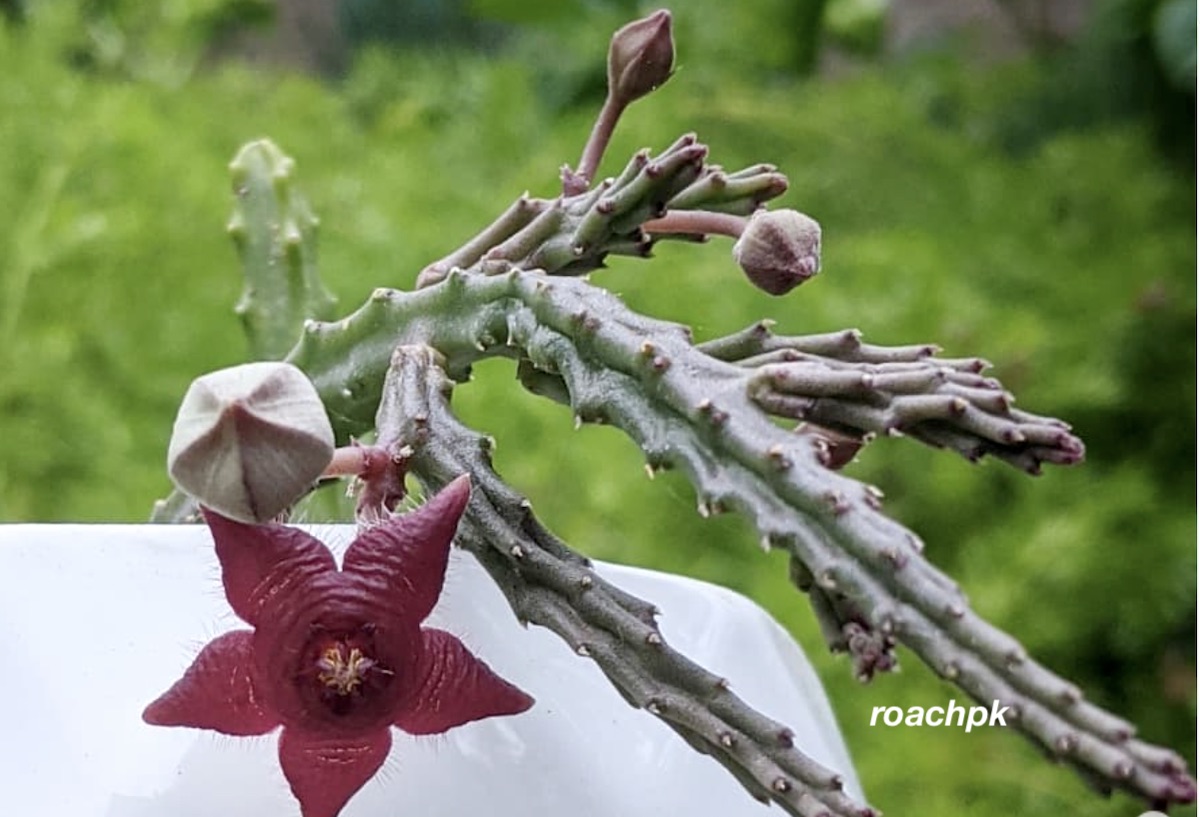
-custom_crop.jpg)

Thanks for sharing your thoughts about these unusual plants and the blossoms.
I would never have known!!
Your love and enthusiasm is infectious.
Celest
Thank you for a lovely comment, Celest! Which reminds me, I need to move my collection to a warmer spot. They’re going to the east deck against a wall that’ll retain warmth and keep them cozy all winter, where they may get a little rain but not much.
Thanks for sharing. I think I actually have one of them growing in a pot. It sort of droops over the side and trails, but then the flowers bloom at the ends.
Sandy Bedard
Hi Sandy — Yep, that’s what they do!
I enjoy your articles and YouTube videos and look forward to receiving them every month.
This months story on ‘Success with Stapeliads (Carrion Flowers)’ was one the best for me. It was filled with so many helpful ideas that I am looking forward to implementing.
Thanks for all your enlightening articles.
Jim
Jim, this makes my day—thank you for a terrific accolade. Makes it all worthwhile!
Thank you for the article on stapelias. I have a stapelia gigantea growing in the ground that had its best year ever – lots of flowers and lots of growth. Flies love it! However, huernia zebrina is not doing so well. Sun exposure seems to affect the color of the stems and I can’t tell if that’s a good thing or not. In the sun they’re orangey; in the shade they’re green and it hasn’t bloomed in several years. How much sun do you give yours? After reading your article I’m going to repot and try again.
Hi Nancy — I lost my Stapelia gigantea two years after I got it, which was really discouraging, but I’m ready to try again. My Huernia zebrina, on the other hand, is happy, although one stem has what might be the dreaded black rot. Hard to tell…it’s floppy and discolored. (Better get rid of it, I suppose.) As for where I keep the plant, it’s in bright shade most of the day with an hour or two of full sun. It’s crowded in its pot, and stems want to hang over the side and fall off, as though trying to escape. Those stems, which are new growth, are where flowers form, but tend to hide—they’re more in the shade than in the sun. I occasionally find fallen stems withered and beyond hope below the plant, which sits on a ledge.
I have 3 of these stapeliads, all are in pots and kept inside. One has just finished 2 blooms and there is another stem with a bloom starting to show. The second one, blooms about 3 times a year and the last one does nothing bloom wise. Perhaps it is an older one and needs to be retired! I live in Henderson, NV in zone 9a…They did not do well outside, but enjoy the indoors.
I follow your website and totally enjoy your videos, interviews and helpful hints.
Thank you.
Karoline
Hi Karoline — Good to know that you have stapeliads that bloom indoors. I got the impression from my research that they were too fiddly to grow in an indoor environment except a greenhouse.
Thanks for the article, Debra! I have a couple of these, but your photos of the more unusual varieties make me think I should get a few more to add to my collection. They are weird and wonderful!
Purr. I agree! I’m hoping to add a few more to my collection, too. The flowers are SO worth it!
Our Central Arizona Cactus and Succulent Society PEG group met today and the topic was Stapeliads. Your post reinforces what the experts today told us even down to the best plants to try first! Thank you Debra for all you excellent information written with pictures of the plants. Fantastic!
Nancy, wow, what a terrific comment and compliment! This makes me happy — thank you!
I have had stapeliads for many years and I love them, smell and all ! Here in S. Texas mine stay outside most of the year, just coming indoors for colder weather. I have 5 of the ones you mentioned in your article and would like to have more. Nice to see so many in one article. Thanks for the information.
Hi Deva — Hopefully they’ll become more available. I’d love to have a larger collection, too.
I really enjoy all of your articles. My mother-in-law gave me her large Stapelia gigantea (I think) and I keep it indoors – upstairs in a sunny NW facing window in the SF Bay Area. It gets a couple of blooms once a year. She recently died after 91 great years and I feel fortunate to have this succulent and a pencil cactus that she gave me years ago. I am going to try repotting it and fertilizing it to see if I can get it to bloom more often. Thanks for the tips!
Hi Alice — What a wonderful reminder of your mother! May her plants continue to bring you joy.
Stapeliads are my favorite succulent family! I grow well over 100 varieties. Most are easy to care for, and thrive in cultivation in a well draining soil. Thanks for posting this article!
Thanks, Kal. You’re welcome! Wow, over 100 varieties? That’s amazing. You must have a greenhouse or live in an ideal climate.
Hi Debra Lee,
Great article, thanks for the multitude of photos and information.
Just a little tip regarding the unknown stapeliad with the speckled yellow flowers in the big pan, it’s a Piaranthus globosus or perhaps geminatus. These species tend to be similar and very variable and some plants show mixed growth characteristics, but my money is on P globosus.
Hey, thanks Florin! Much appreciated~ Debra
Hello Debra Lee
I’m fortunate enough to have some twenty Hoodia seedlings. Any advice from you or your connections about getting them through winter? It’s difficult enough with mature Hoodias!
I’m in the UK btw.
Kind regards
Mike
Hi Mike — This is way beyond my skill level, but perhaps the Asclepiad group on Facebook will be able to help. I’m a member if you want me to officially “Invite” you — LMK. Best wishes from the other side of the world, Debra